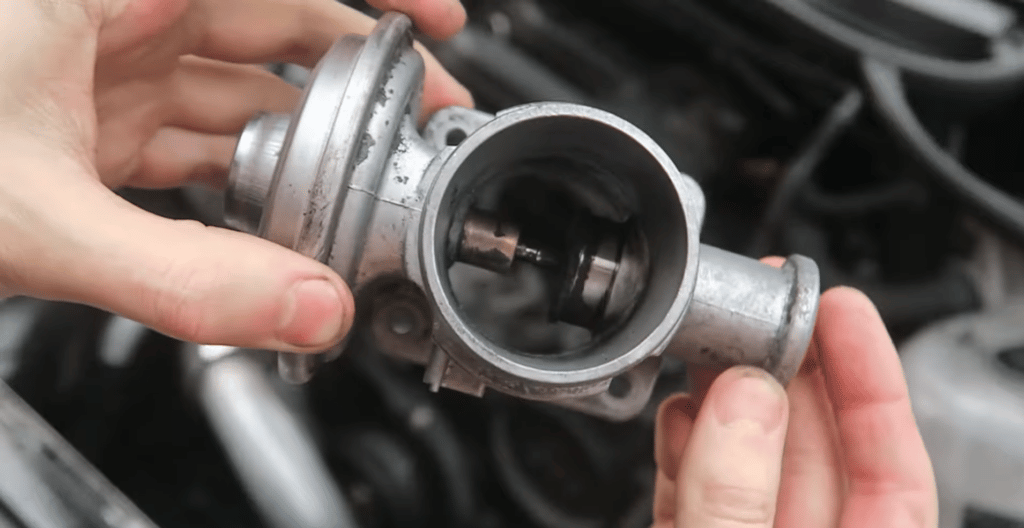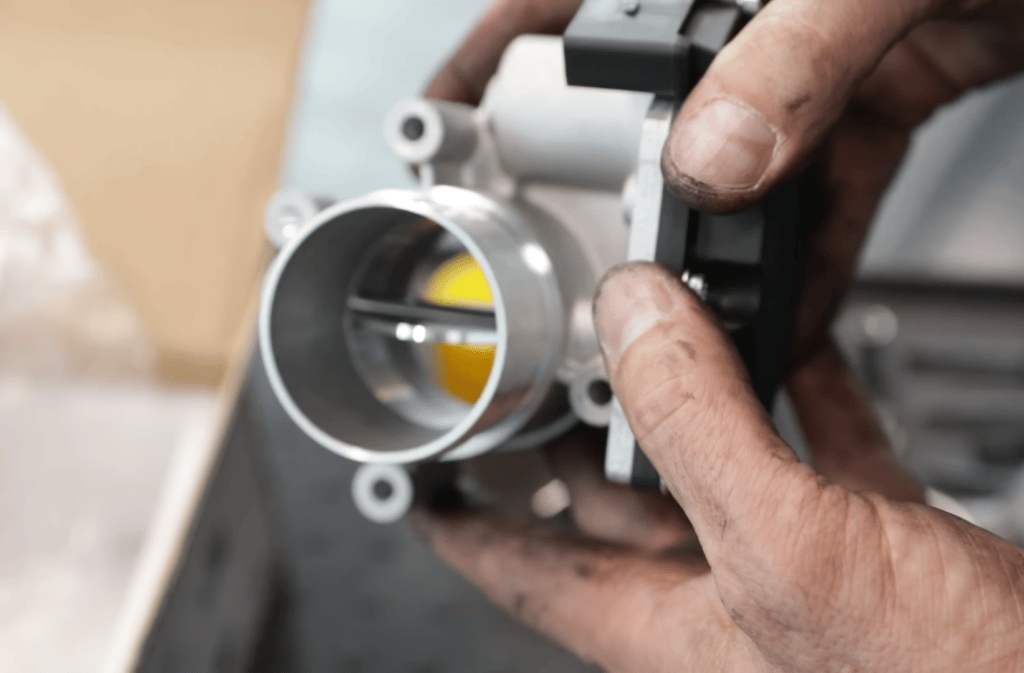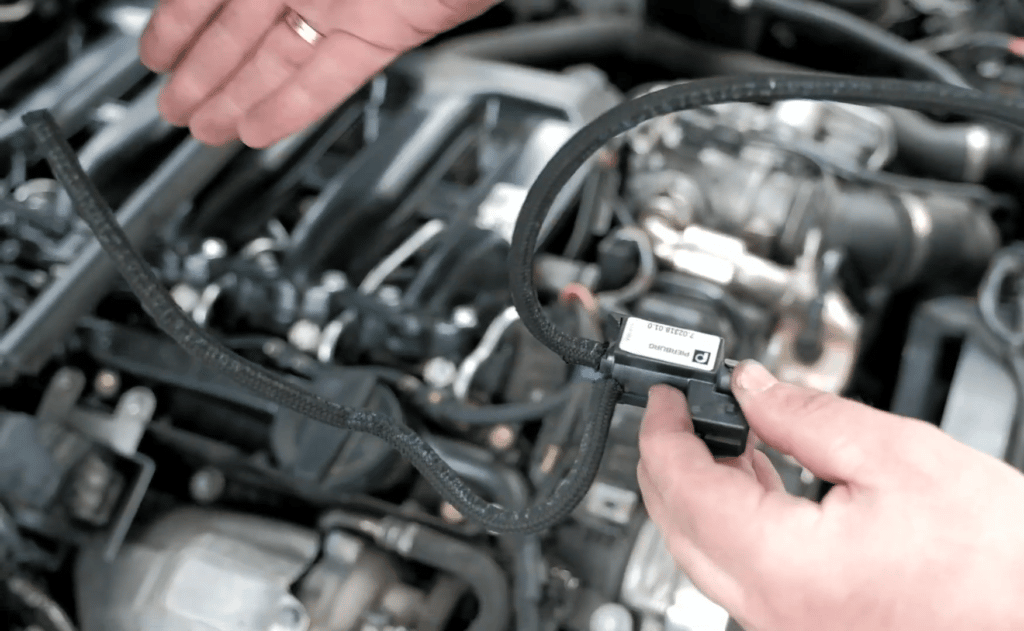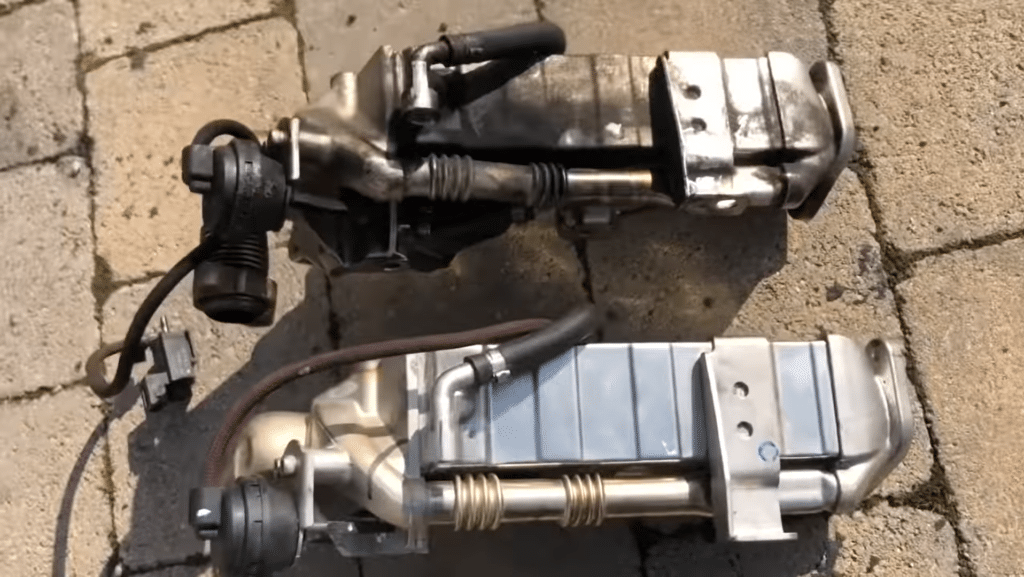Do you want to know how exhaust gas recirculation works? Check out our blog about ‘EGR system’ below.
Exhaust gas recirculation
The so-called ‘exhaust gas recirculation’ or ‘EGR system’ is a proven method of reducing pollutants during the combustion of a vehicle. The exhaust gas recirculation returns extracted exhaust gases from the exhaust manifold to the intake. The amount of gases fed back is determined by the engine control unit (EGR flow rate).
GAIN MORE CONTROL OF YOUR CAR WITH THE CARLY FEATURES
Check the exact pricing of Carly for your car brand!

Fast International Shipping with DHL

14 days adaptor return policy

Excellent customer support

Lifetime warranty in the hardware
SEEN IN
This reduces the proportion of oxygen in the air-fuel mixture because the exhaust gases suppy contains much less oxygen than fresh air. The lower oxygen content lowers the combustion temperature in the cylinder. The colder the combustion is, the less harmful NOX nitrogen oxides are produced during combustion. Exhaust gas recirculation can reduce NOX by up to 70%, while diesel vehicles can reduce soot particles by 10%.
Depending on the load and driving condition, the engine control unit determines how much exhaust gas is added to the intake via the EGR valve, which is the so-called ‘exhaust gas recirculation flow rate’. When the engine is started and at full load the exhaust gas recirculation system is completely deactivated. In comparison, the EGR rate at low engine speeds is up to 90% in the part-load range.
When is exhaust gas recirculation active?
Depending on the load and driving conditions, the engine control unit determines how much exhaust gas is fed to the intake tract via the EGR valve, the so-called “exhaust gas recirculation rate”. When the engine is started or running at full load, the EGR is completely deactivated. By comparison, the EGR rate at low engine speeds in the part-load range is up to 90%.
Components of the exhaust gas recirculation system
Exhaust gas recirculation valve

Nowadays, the EGR valve is a component of the exhaust system of all vehicle manufacturers. The EGR valve and the EGR cooler are normally located near the engine block.
The main function of the EGR valve is to regulate the exhaust gases that are enter the intake tract (EGR flow rate). In most vehicles, the EGR valve is located very close to the intake manifold or directly in the exhaust gas recirculation cooler, if available. Compared to gasoline engines, the opening cross-section of the valve is usually larger than in diesel engines. This is because the EGR rate in diesel engines is much higher than in gasoline engines.
There are two different options to control an EGR valve. On the one hand, there are pneumatic EGR valves that are actuated via an electromagnetic valve using a vacuum. On the other hand, there are EGR valves that are controlled directly by the engine control unit (electrically).
The EGR valve is a small component in the engine compartment, which may be difficult to find on the first view.
The EGR valve is equipped with an inlet and an outlet for the exhaust gases. In addition, depending on the control option, either a vacuum box is installed or an electric motor.
Control damper (only for diesel engines)

Normally, a diesel engine would not need a throttle valve/control damper. However, since modern diesel vehicles always have an exhaust gas recirculation system, a throttle valve/control damper is needed to achieve precise control of exhaust gas recirculation. In addition, the throttle valve/control damper valve prevents the engine from shaking when it is switched off.
Electroswitch valve/Electropneumatic transducer

In older or simple exhaust gas recirculation systems, usually an electro-switching valve is used. This electro-switch valve has only two configurations, it can only be open or closed. This also means that the exhaust gas recirculation valve using an electric switch valve can only open or close completely.
In comparison, the newer exhaust gas recirculation valve can be controlled continuously with electro-pneumatic converters.
Both the electro-switching valve and the electro-pneumatic converter operate via a vacuum. In gasoline vehicles, the vacuum is taken off via the intake manifold. In diesel vehicles, on the other hand, the vacuum is usually generated via a vacuum pump and taken from it.
Exhaust gas recirculation cooler (mostly for diesel vehicles)

As emission standards become increasingly stricter, the methods for reducing pollutants need to improve. For this reason, for several years, an additional exhaust gas recirculation cooler has been installed in diesel vehicles. This has the task of cooling the exhaust gases that are fed to the intake. If the exhaust gases are cooler, the combustion temperature in the engine can be lowered even further. The result is that even fewer NOX nitrogen oxides are produced during combustion.
What happens if the exhaust gas recirculation valve is defective?
In the event of a defect in the exhaust gas recirculation valve, it depends on the position in which the EGR valve is stuck. If the exhaust gas recirculation valve is stuck in the closed position, it is initially possible to continue driving. However, if the EGR valve is stuck in the open position, it is often no longer possible to continue driving, as the engine stalls when the accelerator is opened.
Regardless of the position in which the EGR valve is stuck, the fault should always be repaired. The reason for this is that the EGR system is an important part of the exhaust gas after treatment.
How does a defective EGR become noticeable?
- Illumination of the check engine light
- Reduced engine power
- Engine jerks
- Heavy soot formation from the exhaust when accelerating
- Bad fuel economy
- Entry of the error code e.g. “EGR valve incorrect” or similar
Diagnosis and repair of faults in the EGR system
If you suspect any issue, we recommend running a diagnosis using an OBD2 adapter, first. This will read your error memory from your ECUs. In many cases you can find out when an error (DTC) has been detected and what specifically the error is.
OBD adapters and diagnostic equipment can be used to diagnose a variety of engine problems, regardless of make or model. The issues found vary between simple sensor defects and more complex problems, such as turbocharger defects. In some specific cases, an OBD adapter can help fixing an issue. Sometimes just clearing old trouble codes (DTCs) will help, saving you a trip to the repair shop.
Whether you like fixing stuff yourself or you are a professional, a diagnostic device is a valuable tool that every driver should have in his car.
Cost of repair for a defective egr system
Without specific troubleshooting, the estimation of the cost for fixing a defective exhaust gas recirculation system is very difficult. This is because the cost for a defect on the exhaust gas recirculation system can range between US$ 5 and US$ 1000, depending on the source of the error. If, for example, only a small vacuum hose is defective, the repair cost is very low. If the exhaust gas recirculation valve or the exhaust gas recirculation cooler with integrated exhaust gas recirculation valve is defective, it can be expensive up to US$ 1000.
Unfortunately, it is also often the case that the exhaust gas recirculation cooler or the exhaust gas recirculation valve is very difficult because other components have to be removed in order to access the repair. On some vehicles, the removal and installation of the exhaust gas recirculation valve or cooler can take up to 10 hours.

